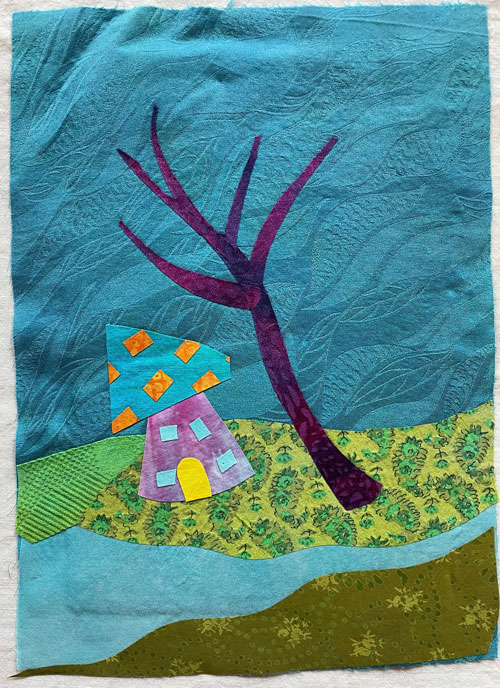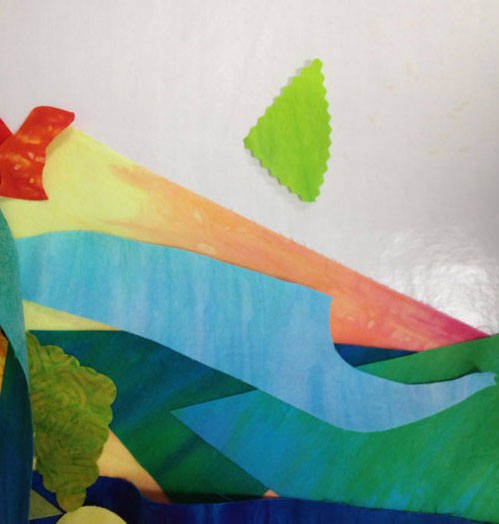
Welcome to a new free-form embroidery design!
This stitch project began with a step-out from the Nut House embroidery found in my book Playful Free-Form Embroidery. On the left you see the image used in the book directions and on the right is a detailed image from the finished piece. The step-out swatch only measures about 5” x 9” and has a few elements stitched to the felt background fabric. It the Nut House design, these elements are leaves on the tree branch and a flying tire swing that the ladybugs play on.
What can I do with this step-out swatch? The ladybugs aren’t the only ones who are having fun. I’m going to have some fun too by improvising a new design using the step-out swatch. Whoohoo!

My first step is to turn the swatch horizontally. By turning it in this direction it no longer relates to the tree branch and tire swing in the Nut House project. Now it has new life and I can imagine a potential design. Can you guess what I have in mind?
Beginning a new embroidery project is so invigorating! And to improvise a design is even more energizing. I recommend it to everyone.





